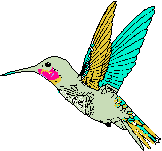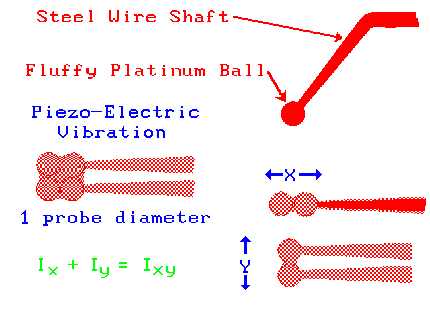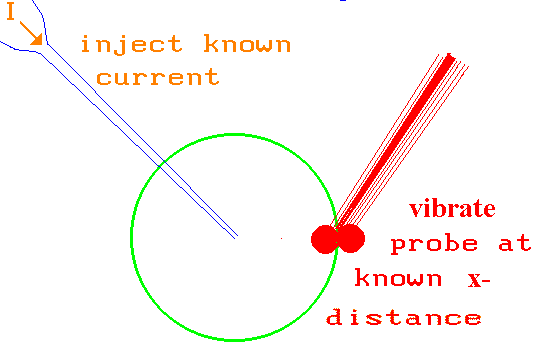
Calibration of the SVET
Physical Description of Scanning Vibrating Electrode.

The 'wire probe' as it is called is a miniature spherical capacitor plate
on the end of a short wire shaft. The wire shaft is insulated its entire
length with the exception of its ball tip. The tip's
fluffy platinum coating has large surface area and large capacitance. When
it is vibrated in an electrical field, the field generates a small current
in the probes capacitor plate which can be measured by the attached
electronics. The
two metal-bimorphs attached to the shaft allow the probe to be vibrated in the
X and Y direction independently. The X- and Y-vibrational frequencies are
different and currents generated in the probe tip can be resolved by
lock-in amplifiers into separate X- and Y-currents (Ix and Iy). The ability
of the X- and Y-currents to be resolved make this
instrument a two-dimensional vibrating probe. The separate X- and Y-
currents can be recombined to produce a total current in the XY-plane with
an associated vector length and angle. (Figure modified from Kunkel, 1991).
Model of an Electrical-Potential Point-Source and a Scanning Vibrating Electrode.

In order to calibrate the SVET one uses the fact that a known
electrical current
injected via a microelectrode will create a precisely
known spherical potential field
surrounding the orifice of the microelectrode. This field exhibits an
equivalent potential drop along radii at equivalent distances from the
orifice. This represents shells of equipotential which can be used to
calibrate the probe vibrated in the appropriate direction on that spherical
surface. Repeating this procedure in the X- and Y- directions away from the
source provides separate X- and Y- calibrations as well as any corrections
to either due to minor non-orthogonality of the X- and Y-vibration directions.
(Figure modified from Kunkel, 1991).
If you have questions about calibrating the various probes
or the University of Massachusetts Vibrating Probe Facility,
email its PI, Joe Kunkel
Back to: |
UMass VPF|


